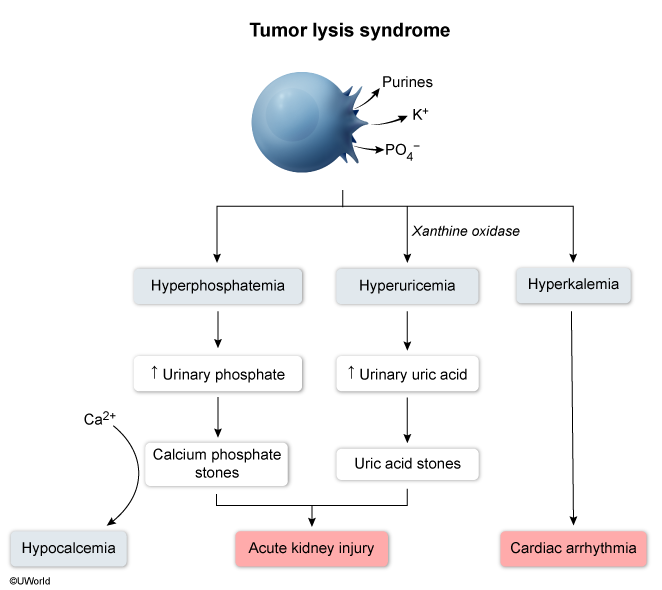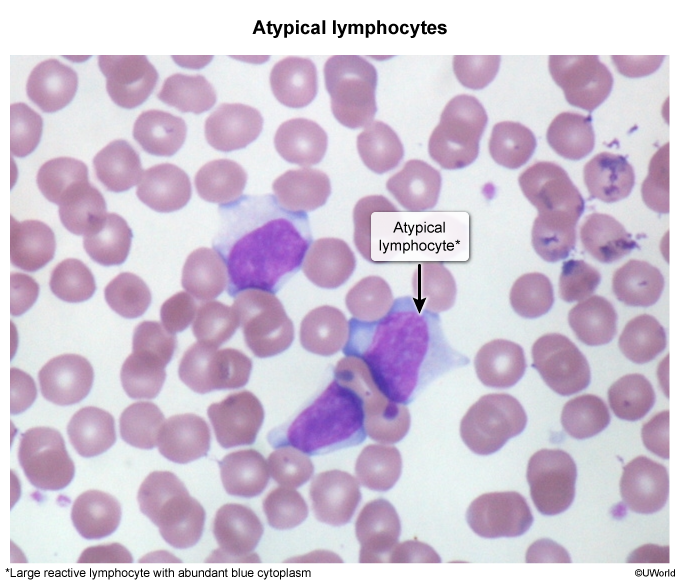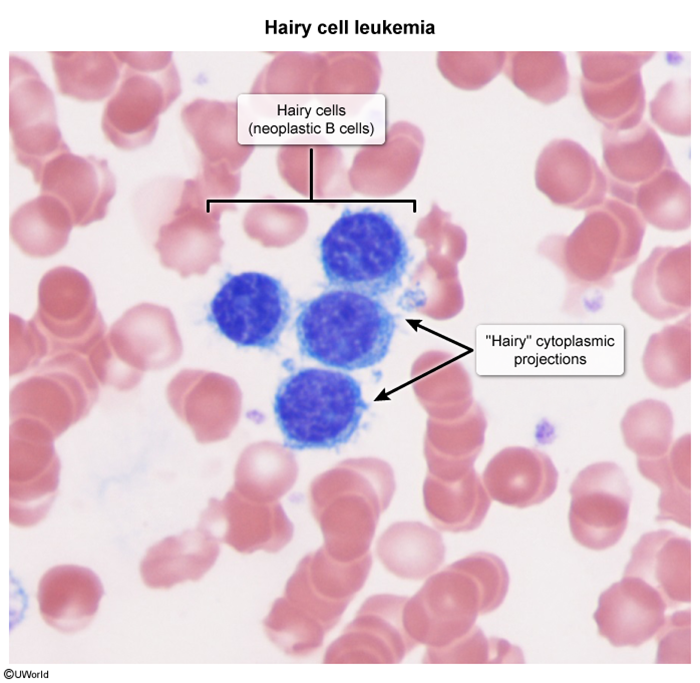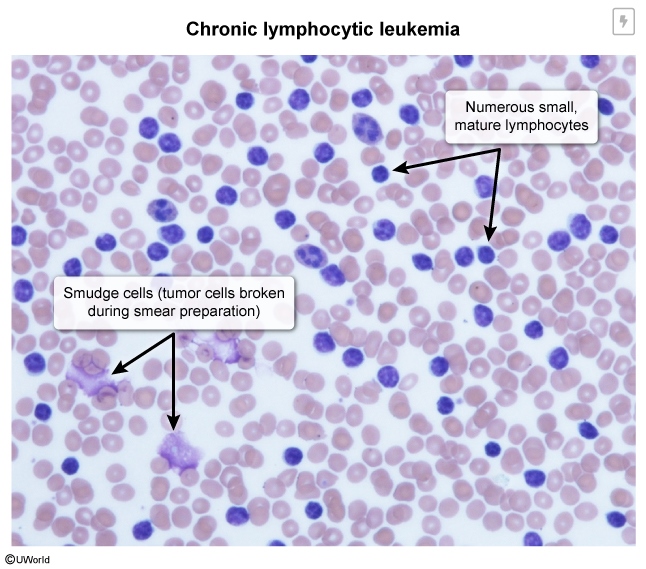Chronic Lymphocytic Leukemia
Article Sections
Introduction
Chronic lymphocytic leukemia (CLL) is a clonal malignancy characterized by the accumulation of functionally incompetent, mature-appearing B lymphocytes in the peripheral blood, bone marrow, and lymphoid tissues. It is a common form of leukemia in Western countries, occurring primarily in older adults.
Pathogenesis
CLL develops in a stepwise process involving:
- Monoclonal B cell lymphocytosis: Various factors (eg, antigenic stimulation, mutations in genes that can disrupt cell cycle regulation [eg, TP53], upregulation of antiapoptotic proteins [eg, BCL2]) lead to the unregulated proliferation of a single mature B lymphocyte. This population of monoclonal B lymphocytes can be detected in the peripheral blood but is functionally incompetent (ie, unable to mount an appropriate immune response to an infection). Patients are asymptomatic and have no other clinical findings at this stage. It is estimated that monoclonal B cell lymphocytosis is present in ~10% of people age >60.
Continue Learning with UWorld
Get the full Chronic Lymphocytic Leukemia article plus rich visuals, real-world cases, and in-depth insights from medical experts, all available through the UWorld Medical Library.
Figures

Figure 1
Images

Image 1

Image 2

Image 3
Tables
Table 1